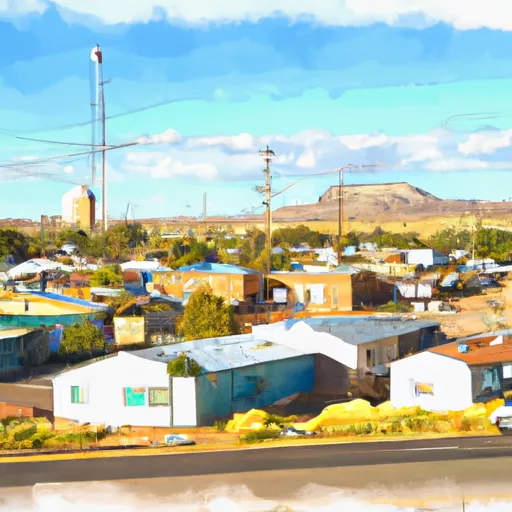-
 Snoflo Premium
Snoflo Premium
Get unlimited access to all our content
With no Ad interruptions! - Start Your Free Trial Login with existing account
Willcox
Eden Index
Climate
8.8
•
Recreation
•
Community
•
Safeguard
3.5/10

Willcox is a charming town located in southeastern Arizona, known for its unique climate, diverse hydrology constituents, and abundant outdoor recreation opportunities. The town experiences a semi-arid climate, characterized by hot summers and mild winters. Average high temperatures range from the upper 80s to low 90s Fahrenheit in summer, while winter temperatures hover around the 60s, making it an appealing destination year-round.
Hydrologically, Willcox benefits from the nearby Dos Cabezas and Chiricahua Mountains, which provide a source of groundwater, making the region agriculturally rich. The area is also home to the Willcox Playa, a large dry lakebed that fills with water during rainy periods, attracting a wide variety of migratory birds.
Outdoor enthusiasts can explore the area's natural beauty through activities such as hiking, bird watching, and wildlife photography. The nearby Coronado National Forest offers miles of scenic trails, perfect for discovering breathtaking vistas and diverse plant and animal life. Additionally, the Dos Cabezas Mountains provide opportunities for rock climbing and camping, while birdwatchers can spot rare species in the Willcox Playa Wildlife Area.
Overall, Willcox's pleasant climate, unique hydrology, and outdoor recreational offerings make it an appealing destination for nature lovers and adventure seekers alike.
What is the Eden Index?
The Snoflo Eden Index serves as a comprehensive rating system for regions, evaluating their desirability through a holistic assessment of climate health, outdoor recreation opportunities, and natural disaster risk, acknowledging the profound impact of these factors on livability and well-being.
Climate Health Indicator (CHI): 8.8
Willcox receives approximately
323mm of rain per year,
with humidity levels near 46%
and air temperatures averaging around
16°C.
Willcox has a plant hardyness factor of
8, meaning
plants and agriculture in this region tend to thrive here all year round.
By considering the ideal temperature range, reliable water supplies, clean air, and stable seasonal rain or snowpacks, the Climate Health Indicator (CHI) underscores the significance of a healthy climate as the foundation for quality living.
A healthy climate is paramount for ensuring a high quality of life and livability in a region, fostering both physical well-being and environmental harmony. This can be characterized by ideal temperatures, reliable access to water supplies, clean air, and consistent seasonal rain or snowpacks.
Weather Forecast
Streamflow Conditions
San Pedro-Willcox
Area Rivers
San Pedro-Willcox
Snowpack Depths
San Pedro-Willcox
Reservoir Storage Capacity
San Pedro-Willcox
Groundwater Levels
Recreational Opportunity Index (ROI):
The Recreational Opportunity Index (ROI) recognizes the value of outdoor recreational options, such as parks, hiking trails, camping sites, and fishing spots, while acknowledging that climate plays a pivotal role in ensuring the comfort and consistency of these experiences.
Access to outdoor recreational opportunities, encompassing activities such as parks, hiking, camping, and fishing, is crucial for overall well-being, and the climate plays a pivotal role in enabling and enhancing these experiences, ensuring that individuals can engage in nature-based activities comfortably and consistently.
Camping Areas
| Campground | Campsites | Reservations | Toilets | Showers | Elevation |
|---|---|---|---|---|---|
| Hospital Flat | 10 | 8,982 ft | |||
| Cunningham | 10 | 8,881 ft | |||
| Stockton Pass | 7 | 5,690 ft | |||
| Riggs Flat | 31 | 8,739 ft | |||
| Cochise Stronghold | 10 | 4,948 ft | |||
| Roper Lake State Park | 65 | 3,118 ft | |||
| Arcadia | 19 | 6,651 ft | |||
| Shannon | 11 | 9,054 ft |
Nearby Fishing
Nearby Ski Areas
Catastrophe Safeguard Index (CSI):
The Catastrophe Safeguard Index (CSI) recognizes that natural disaster risk, encompassing floods, fires, hurricanes, and tornadoes, can drastically affect safety and the overall appeal of an area.
The level of natural disaster risk in a region significantly affects safety and the overall livability, with climate change amplifying these risks by potentially increasing the frequency and intensity of events like floods, fires, hurricanes, and tornadoes, thereby posing substantial challenges to community resilience and well-being.
Community Resilience Indicator (CRI):
The Community Resilience Indicator (CRI) recognizes that education, healthcare, and socioeconomics are crucial to the well-being of a region. The CRI acknowledges the profound impact of these elements on residents' overall quality of life. By evaluating educational resources, healthcare accessibility, and economic inclusivity, the index captures the essential aspects that contribute to a thriving community, fostering resident satisfaction, equity, and social cohesion.

